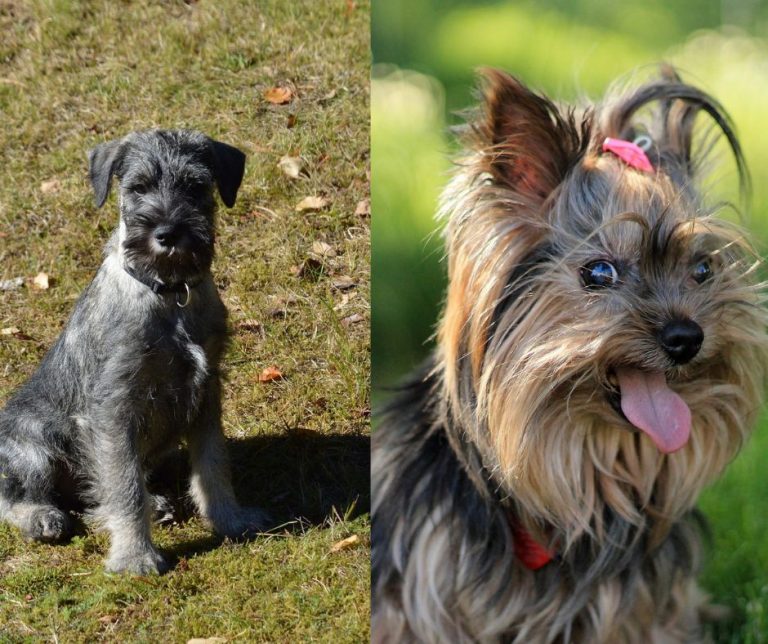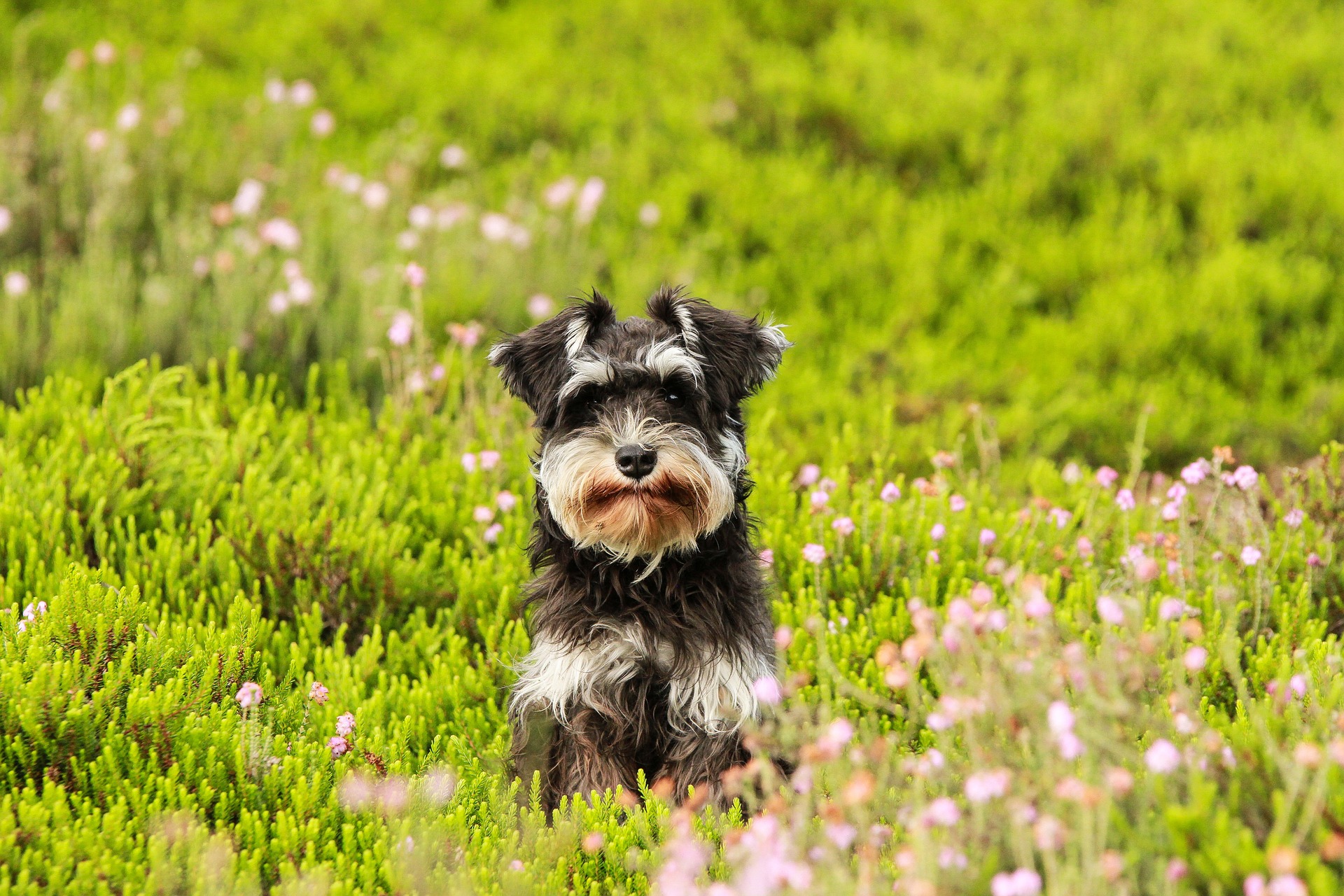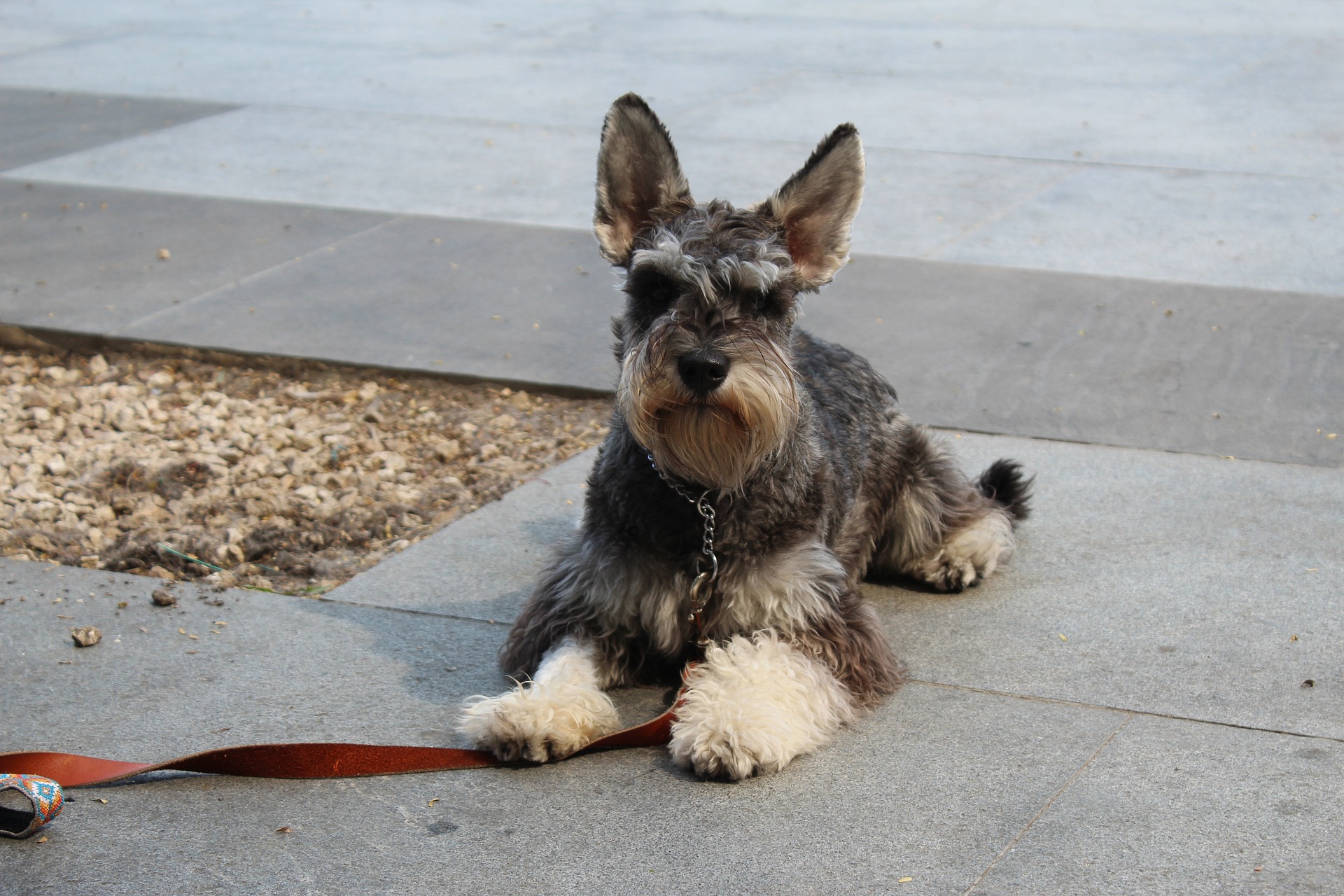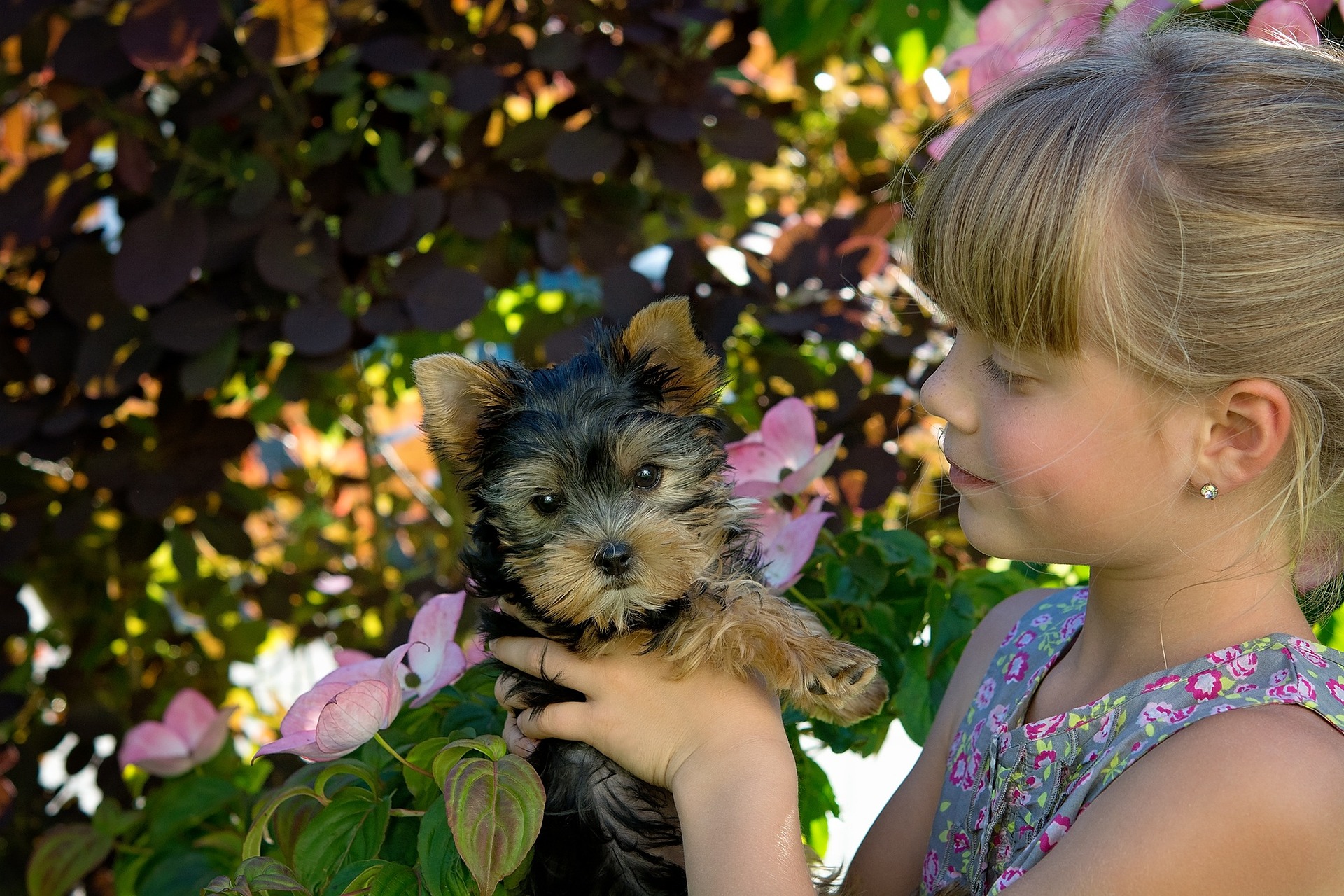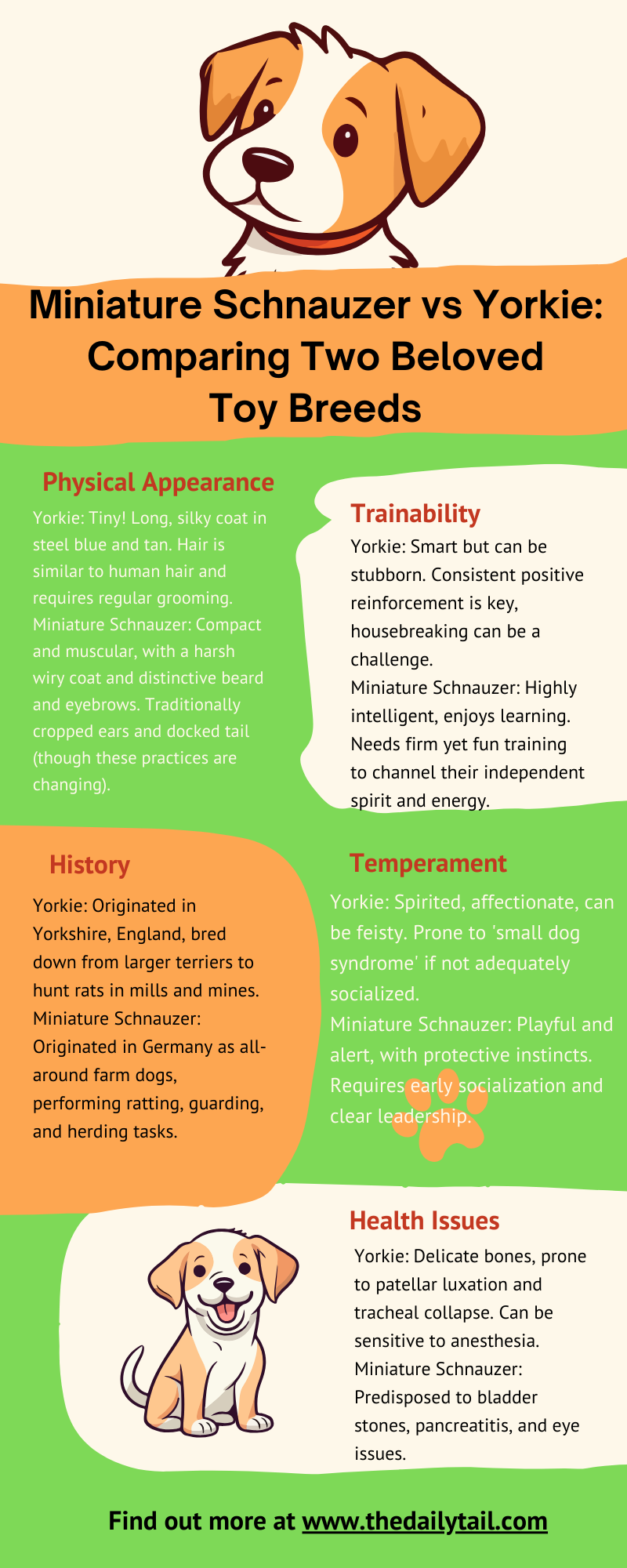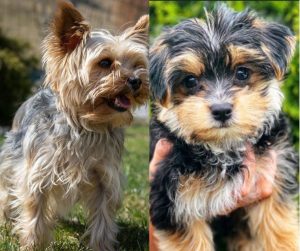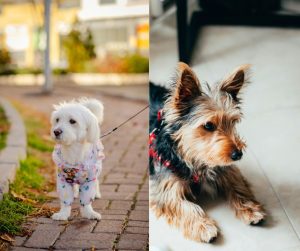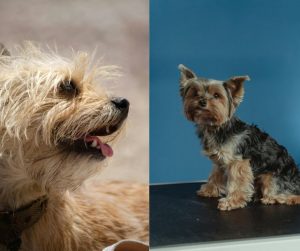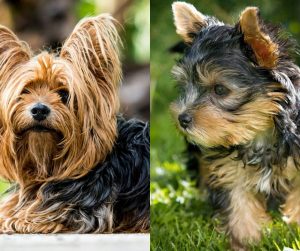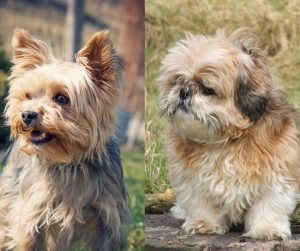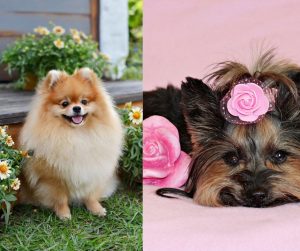Tiny diva or feisty watchdog? Appearances are deceiving when it comes to the Yorkshire Terrier and Miniature Schnauzer. Let’s explore their surprisingly diverse needs.
When choosing a small dog breed, potential pet owners often compare qualities to find a match that suits their lifestyle. The Miniature Schnauzer and the Yorkshire Terrier, commonly referred to as a Yorkie, are two breeds that regularly appear on the radar of those looking for a compact canine companion. Each breed boasts a robust personality and distinct physical traits, which draw admirers and devoted owners alike. They share some similarities due to their diminutive size but diverge considerably when it comes to their origins, temperament, and maintenance needs.
The Miniature Schnauzer, with workmanlike origins from Germany, contrasts with the Yorkie, a breed that was a pampered companion for English nobility. These historical backgrounds have shaped not only their temperaments but also their adaptability to various living environments. Schnauzers are known for their wiry coats, square build, and spirited nature, while Yorkies are recognized for their fine, silky fur and confident, affectionate demeanor. Any potential owner must consider these breeds’ grooming requirements, health concerns, and expected lifespan when making a decision.
Choosing between a Miniature Schnauzer and a Yorkie is more than a matter of preference for one’s physical appearance; it encompasses lifestyle compatibility, potential health issues, and how well each breed can assimilate into one’s family. Today, we will look at the Miniature Schnauzer vs Yorkie puppy breed comparison.
Key Takeaways
- Miniature Schnauzers and Yorkies are distinguished by unique temperaments and physical traits
- Maintenance and health considerations play a significant role in selecting the right breed
- Suitability for a home environment depends on a breed’s characteristics and an owner’s lifestyle
Breed Origins and History
When considering a new furry addition to the family, it’s fun to peek into their past. The story of how breeds came to be can shape their temperament and qualities. Let’s take a stroll down memory lane and look at where our perky Miniature Schnauzer and the dainty Yorkshire Terrier hailed from.
Miniature Schnauzer Origins
Originating from Germany in the late 19th century, the Miniature Schnauzer was bred down from their larger cousin, the Standard Schnauzer. Initially, their role was to catch rats and act as guard dogs, a job they were rather spiffy at, thanks to their spirited nature. The breed made its debut in the United States in the roaring 1920s and was welcomed into the American Kennel Club (AKC) in 1926, further cementing its popularity as a distinct breed.
- Country of Origin: Germany
- First AKC Registration: 1926
Yorkshire Terrier Origins
Over in the United Kingdom, the Yorkshire Terrier emerged during the Industrial Revolution. These pups were skilled at keeping factories free of rodents, an essential job in England’s textile mills. They became a breed of their own by the clever hands of working men who aimed to create a small, agile terrier. The Yorkie soon became a fashionable lapdog for Victorian ladies. They were recognized by the AKC, lovingly maintaining their reputation for both style and utility.
- Country of Origin: England
- First AKC Registration: Late 19th century
Both of these breeds have come a long way from their working-dog days, charming their way into hearts and homes with their distinctive looks and lively personalities. They might have put their ratter days behind them, but their eagerness to please and boundless energy remain a testament to their rich heritage.
Physical Characteristics
When comparing the Miniature Schnauzer and the Yorkshire Terrier, one can spot distinct variations in their physical attributes that set them apart. Let’s peek at their coats and colors and also unravel the differences in size and weight that define these charming breeds. Both breeds are recognized by the American Kennel Club. The AKC sets the breed standard for all puppies they welcome into their registry.
Coat and Colors
The Miniature Schnauzer showcases a double coat, with a wiry topcoat and a soft undercoat. Their grooming needs are a bit more demanding to keep their coat tamed and neat. As for colors, they frequently sport shades like black, silver, and black and silver.
In contrast, the Yorkshire Terrier boasts a long, silky coat that is quite similar to human hair. It’s known for being more single-coated, and its traditional colors include a black and tan hue that blends into a dark steel blue.
Size and Weight
- Miniature Schnauzer:
- Size: They are a tad more robust, standing taller with a shoulder height ranging from 12 to 14 inches
- Weight: They typically weigh between 11 to 20 pounds, underlining their medium-sized stature
- Yorkshire Terrier:
- Size: The dainty Yorkie is smaller in size, often not exceeding 7 to 8 inches at the shoulder. Some pet parents even want a Teacup Yorkshire Terrier, or Teacup Yorkie, which is the ultimate lap dog
- Weight: They are lightweight companions, with a weight usually not surpassing 7 pounds
Both breeds pack a lot of personality into their compact frames, but it’s their size that often influences a pet parent’s choice. The Miniature Schnauzer is a sturdy option for those who prefer a bit more ‘dog’ to love, while the Yorkshire Terrier is ideal for someone looking for a petite and affectionate friend who can easily snuggle into the smallest of laps.
Temperament and Personality
When deciding between a Miniature Schnauzer and a Yorkshire Terrier, understanding their distinct temperaments and personalities is key. Both breeds are renowned for their energy and charm, but they each express these traits differently. Let’s get into the specifics of their typical behaviors and social traits to see how they match up with your lifestyle. Let’s look at the dog breed comparison in terms of temperament.
Typical Behaviors
Miniature Schnauzers are energetic and intelligent, known for their eagerness to learn and play. They often carry a stubborn streak but respond well to consistent training. With their natural alertness, they make excellent watchdogs and are always aware of their surroundings.
On the other side, Yorkshire Terriers may be small, but they are equally energetic and courageous, often showing no fear despite their size. Their playful and outgoing nature is coupled with a strong sense of curiosity. Yorkies can be quite affectionate with their families, forming close, loyal bonds.
Social Traits
When it comes to being social, Miniature Schnauzers are friendly and generally affectionate, often loving nothing more than being involved in family activities. They are typically good with children and other pets when socialized properly.
Yorkshire Terriers tend to have an independent flair but also possess a loving and devoted temperament. They may take some time to warm up to new people or situations, hence early socialization is important for this breed to nurture their friendly side. They thrive on attention and can build strong, loyal relationships with their owners and families.
Health and Lifespan
When considering a Miniature Schnauzer or a Yorkshire Terrier (Yorkie), potential pet parents should note that both breeds have unique health considerations and generally enjoy long lifespans with the right care.
Common Health Issues
Miniature Schnauzers often have a lifespan ranging from 12 to 15 years and they are known for certain inheritable health conditions. Some common health problems they may encounter include:
- Cataracts: This condition can lead to blindness if untreated, but affected dogs can still live full lives with proper management
- Pancreatitis: A condition affecting their digestion that requires dietary management and can be life-threatening
- Hip Dysplasia: A painful joint condition that can be managed with medication and lifestyle adjustments
Yorkshire Terriers are also known for their longevity, with many living into their early to mid-teens. However, they also face some breed-specific health challenges such as:
- Patellar Luxation: A knee condition where the patella moves out of its normal location, which can lead to lameness or discomfort
- Progressive Retinal Atrophy (PRA): This eye condition leads to the deterioration of eyesight and potential blindness, although Yorkies with PRA can adapt to their vision loss
Preventative Care Tips
To keep these little guys as healthy as possible, here are a few preventative care measures:
- Regular Vet Check-Ups: Routine visits to the veterinarian can catch the early signs of conditions like hip dysplasia or cataracts
- Proper Nutrition: A well-balanced diet suited to their specific needs can help prevent issues like pancreatitis in Schnauzers and maintain overall health
- Exercise: A well-planned exercise regime helps prevent obesity, which can contribute to hip dysplasia and other joint issues
- Eye Care: Regular checks for symptoms of PRA and cataracts can ensure early detection and care
- Dental Hygiene: Maintaining good dental health is crucial as both breeds can suffer from dental problems
The love and companionship these dogs offer make it worth the effort to give them a little extra care. And when they’re healthy, they’ll be even more ready for snuggles, playtime, and adventures by your side.
Grooming and Maintenance
When choosing between a Miniature Schnauzer and a Yorkshire Terrier, it’s essential to understand their grooming needs and exercise requirements. These factors can significantly influence the time and effort a pet owner will invest in their furry companion.
Grooming Needs
The Miniature Schnauzer has a wiry coat that’s relatively easy to maintain, but he requires regular grooming to avoid matting and to keep his coat neat. He typically needs clipping or hand-stripping a few times a year. Despite the roughness of the coat, shedding is minimal, making him a good choice for those who want to keep pet hair around the house at bay.
- Frequency of Grooming: Requires professional grooming every 5-8 weeks
- Shedding: Minimal shedding
- Daily Care: Brushing a few times a week is recommended
The Yorkshire Terrier breed possesses a long, silky coat that requires a bit more attention to stay lustrous and tangle-free. Dog owners should be prepared to brush their Yorkie puppy daily to prevent matting and maintain the hair’s silky texture.
- Frequency of Grooming: Daily grooming is ideal
- Shedding: Low to no shedding
- Daily Care: Regular brushing and the occasional trim to keep hair out of their eyes
Exercise Requirements
Miniature Schnauzers are lively and require regular exercise to maintain their health and happiness. They have a moderate energy level that’s well managed with daily activities ranging from walks to playful sessions.
- Type of Exercise: Enjoys walks, games, and interactive play
- Daily Exercise: About 30 to 60 minutes of physical activity is sufficient
Yorkshire Terriers may be small, but they still need their fair share of exercise. They’re not as high-energy as some breeds, but skipping their daily activity isn’t recommended, as it’s crucial for their physical and mental well-being.
- Type of Exercise: Prefers walks, indoor play, and short sessions of fetch
- Daily Exercise: Typically 15 to 30 minutes a day would satisfy a Yorkie’s exercise needs
Both breeds enjoy engaging with their families and can adapt well to various living situations, provided their grooming and exercise needs are met. This ensures that they not only look their best but are also content and well-behaved companions.
Living Environment
When choosing between a Miniature Schnauzer and a Yorkshire Terrier, it’s important to consider each breed’s adaptability to your living space and its compatibility with family life.
Suitability for Apartments
Both the Miniature Schnauzer and the Yorkshire Terrier adapt well to apartment living. Despite their compact size, they do have different exercise needs. The Miniature Schnauzer has a moderate energy level and will need daily walks to stay healthy and happy. On the other hand, the Yorkshire Terrier, known for being less active, can often be content with shorter, more frequent bursts of indoor play. It’s vital to remember though, these are active dogs in small packages, and they appreciate mental stimulation just as much as a cozy lap.
- Miniature Schnauzer:
- Requires daily walks and mental engagement
- Can live happily in an apartment if exercised properly
- Yorkshire Terrier:
- Low to moderate exercise needs; enjoys playtime
- Well-suited for apartment living and is known to be less demanding when it comes to space
Compatibility with Children and Other Pets
Both breeds can be great companions for children and other pets, but this largely depends on their individual personality and early socialization. Miniature Schnauzers are sturdy and playful, which makes them a good match for children. They’re often patient with kids and can participate in fetch and other interactive games. However, they should be introduced to young family members and other pets early to ensure they develop a gentle and accommodating nature.
Yorkshire Terrier breed, while small and often perceived as delicate, has a bold and spirited character. They are better suited to families with older children who understand the need for gentle handling. With their hypoallergenic coats, they are often a preferred choice for families concerned about allergies.
- Miniature Schnauzer:
- Good with children, particularly if socialized from a young age
- Can coexist peacefully with other pets with proper introduction and training
- Yorkshire Terrier:
- Best with older children who know how to handle small dogs
- Hypoallergenic coat is a bonus for families with allergies
- May need time to warm up to other pets but can live in harmony with a proper introduction
Training and Intelligence
When it comes to the Miniature Schnauzer vs Yorkie puppy, intelligence shines in both breeds, but their approach to training and learning can differ significantly. Understanding their unique characteristics can deeply impact the training process.
Trainability and Learning Ability
Miniature Schnauzers are known for their sharp intelligence and eagerness to learn, which makes them highly trainable. They respond well when they are given consistency and positive reinforcement. On the other hand, Yorkshire Terriers possess a keen intelligence, but can have a streak of independence. It’s important to approach a Yorkie with patience and firm yet gentle training methods.
- Miniature Schnauzer:
- Prey Drive: Moderate; can affect training focus
- Adaptability: High; quickly adjusts to new commands
- Trainability: Known for their problem-solving abilities
- Yorkshire Terrier:
- Prey Drive: Higher; may require more attention in training
- Adaptability: Moderately adaptable
- Trainability: Best with consistent and varied training to keep them engaged
Activities and Mental Stimulation
Both breeds require activities that can provide not only physical exercise but also mental stimulation.
- Miniature Schnauzer puppy: They love being challenged and enjoy learning new tasks. An intelligent Schnauzer might thrive in dog sports such as agility or obedience competitions, where their learning ability and activity needs are met
- Yorkshire Terrier puppy: They enjoy play sessions and can be taught tricks and behaviors though the training must be compelling to battle their occasional stubbornness. Engaging a Yorkie’s mind with puzzle toys and games can also help in keeping their active brains satisfied
Incorporating regular training sessions and activity-based learning will go a long way in keeping both the Miniature Schnauzer and the Yorkshire Terrier mentally sharp and content.
Breed Comparisons and Considerations
When considering the Miniature Schnauzer and the Yorkshire Terrier, potential pet owners should look closely at behavioral traits and personal lifestyle compatibility. Both breeds bring their own unique characteristics to the table.
Behavioral Comparisons
Miniature Schnauzer:
- Temperament: They’re often described as fearless, friendly, and intelligent. These dogs are eager to learn and respond well to training
- Interaction: They typically get along well with other pets and children if socialized early
Yorkshire Terrier:
- Temperament: A Yorkie carries a persona of confidence and vivacity. These dogs are affectionate and can be very loyal to their dog owners
- Interaction: Yorkies are known for their bold nature, often showing wariness around other animals and strangers without proper socialization
Choosing the Right Breed for You
The decision between a Miniature Schnauzer and a Yorkshire Terrier should be influenced by lifestyle and personal preference:
| Lifestyle Aspects | Miniature Schnauzer | Yorkshire Terrier |
|---|---|---|
| Space | Adaptable to apartment living but require space for some daily exercise. | Well-suited for small living spaces, like apartments. |
| Family Suitability | Great for families looking for an energetic companion. | Ideal for individuals or families who want a small, affectionate dog. |
| Grooming Needs | Requires regular grooming with special attention to the beard and eyebrows. | High maintenance due to their fine and long coat which needs daily care. |
When deciding which dog breed to welcome into one’s home, potential owners should consider not just popularity, but also how a dog will fit into their lifestyle and household. It’s about finding a furry friend who will complement your life rhythm, whether it’s the spirited and playful Schnauzer or the tender-hearted, elegant Yorkie.

